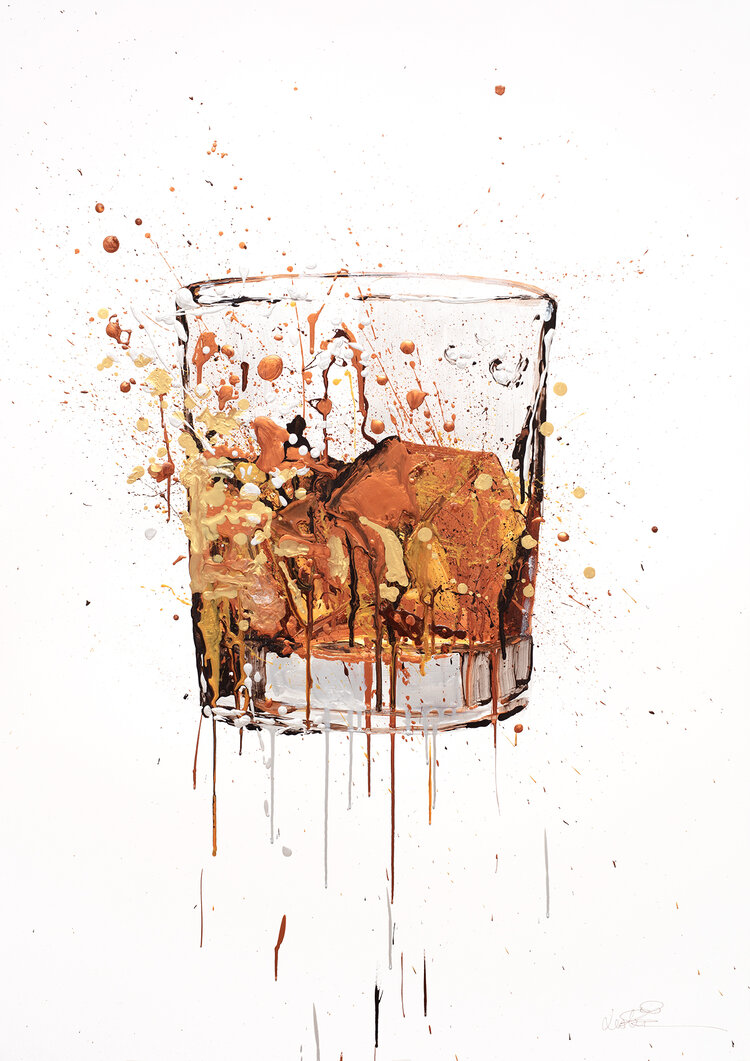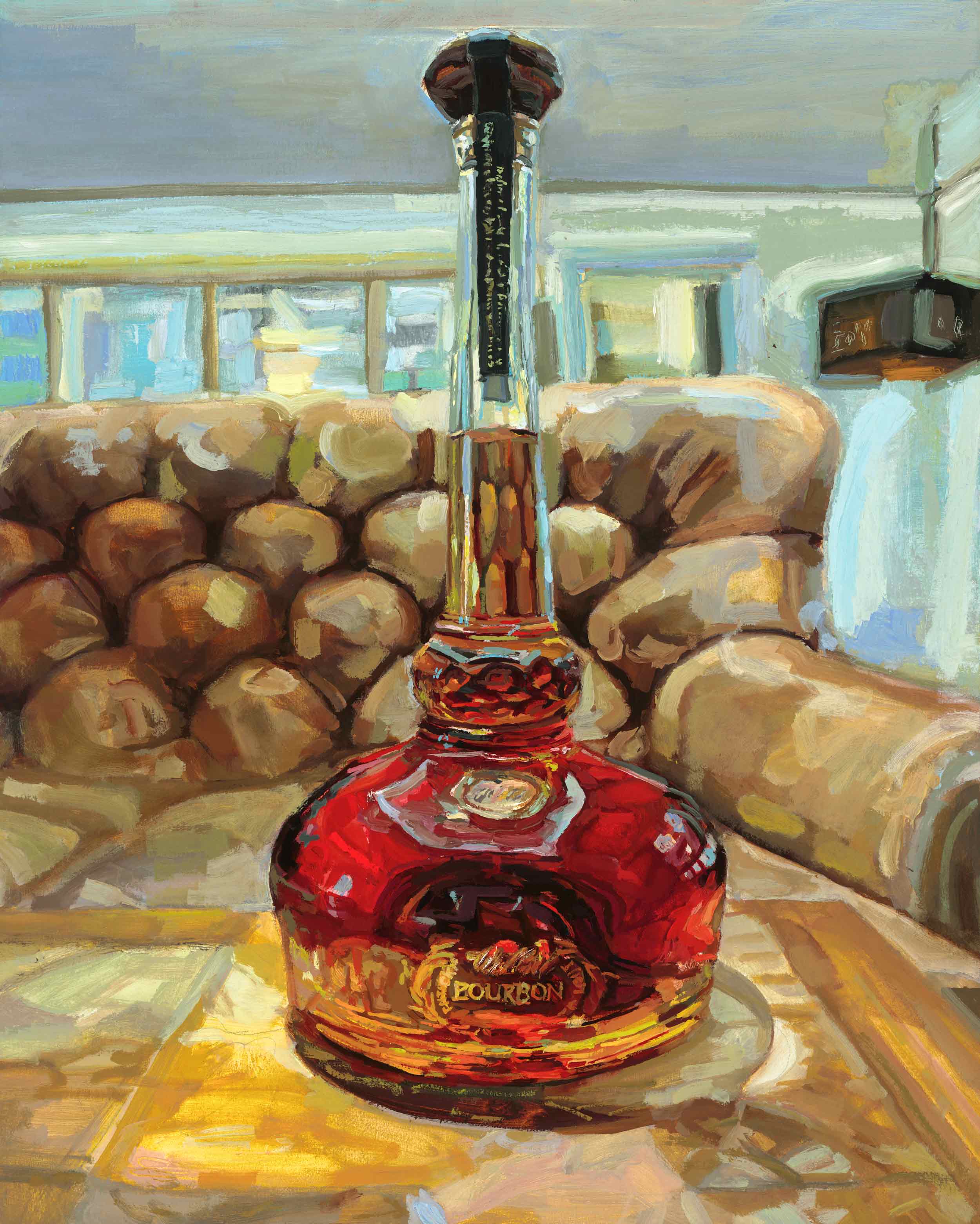Whiskey Art: Capturing the Essence of Distillation in Every Brushstroke
Whiskey Art: Capturing the Essence of Distillation in Every Brushstroke
Blog Article
The Importance of Whiskey Art in Celebrating Heritage and Workmanship in the Beverage Sector
The complex partnership in between bourbon art and the event of heritage and workmanship within the drink sector can not be overstated. With thoughtfully made containers and labels, scotch brands envelop their historic roots and the artisanal skills that specify their production methods.
The Historic Origins of Whiskey
At the heart of bourbon's attraction lies an abundant tapestry of historical roots that trace back to old human beings. The origins of whiskey can be linked to the distillation techniques of the Sumerians and Babylonians around 2000 BCE, where very early forms of fermented grain beverages started to emerge. It was in the Center Ages that the art of purification evolved considerably, specifically in Ireland and Scotland, leading to the production of whiskey as we recognize it today.
The term "whiskey" itself stems from the Gaelic word "uisce beatha," indicating "water of life." This phrase underscores the social relevance of bourbon in Celtic societies, where it was frequently connected with rituals, celebrations, and common bonding. By the 15th century, purification ended up being a recognized craft within monastic neighborhoods, paving the means for the establishment of legal distilleries.
As trade paths broadened, bourbon's popularity grew, transcending regional borders and catching the interest of aficionados worldwide. Whiskey Art. This historical journey mirrors not only the craftsmanship behind scotch manufacturing yet also its indispensable role in social and cultural contexts, noting it as a considerable beverage throughout history
Artistic Expression in Branding
Bourbon branding stands as a compelling crossway of creativity and business, where visual identity plays a crucial role fit customer understanding. The visual appeals of bourbon tags, packaging, and advertising and marketing materials mirror not just the brand name's story however additionally its core values and heritage. With imaginative expression, distilleries convey a narrative that resonates with customers, stimulating feelings and triggering links.
The usage of color, typography, and imagery in branding offers to separate products in a saturated market. Standard motifs might evoke a feeling of authenticity and workmanship, while contemporary layouts can symbolize innovation and forward-thinking. This tactical creative direction enhances brand acknowledgment and commitment, enabling customers to forge a personal relationship with the scotch they select.
Additionally, creative expression in branding commonly works as an event of regional heritage. Distilleries regularly include regional icons or historical recommendations into their layouts, producing a local color that welcomes customers to take part in a broader cultural experience. Ultimately, the creativity behind whiskey branding not just enhances visual allure yet also enriches the general narrative of the brand name, cultivating a deeper admiration for the craftsmanship and heritage ingrained in each bottle.
Workmanship in Bottle Layout
The virtuosity apparent in bourbon branding extends past aesthetic identification to include the workmanship associated with bottle style. Each bottle functions as a vessel not simply for the spirit within, yet likewise for the tale it outlines its top quality, tradition, and origin. The style procedure calls for precise focus to detail, as aspects such as shape, material, and closure contribute considerably to the total assumption of the bourbon.
Workmanship in container design includes selecting top notch glass that can improve the whiskey's color and clearness, while also supplying a responsive experience for the consumer. The silhouette of the container need to be both aesthetically enticing and practical, commonly showing the heritage of the brand name. Numerous distilleries go with special shapes or printed logo designs that evoke a sense of authenticity and history.
In addition, the tag design and typography play an essential duty in communicating the brand name's narrative. Realism Art. A well-crafted container not only Click This Link astounds the customer's go to the website eye but also reinforces the brand name's dedication to top quality and custom. In this way, the workmanship of bottle style comes to be an essential aspect of the bourbon experience, merging virtuosity with a profound respect for heritage
Social Significance of Scotch Art
Celebrating practice and craftsmanship, the cultural relevance of whiskey art transcends simple aesthetic appeals, linking with the social and historic narratives of the areas from which it stems. Each container works as a canvas, portraying the special stories, mythology, and customs that have actually formed local whiskey-making practices. The complex layouts typically reflect the heritage of the distillers, including icons and motifs that reverberate with the society and values of their areas.

On top of that, scotch art plays a vital function in public gatherings and celebrations, working as a substantial link in between individuals and their shared experiences. By appreciating the virtuosity in bourbon packaging, consumers cultivate a much deeper understanding and respect for the craft, eventually enhancing their satisfaction of the drink itself.
Modern Trends in Scotch Presentation
In the last few years, the discussion of scotch has actually developed to show modern tastes and trends while still honoring typical workmanship - Bourbon Art. Distilleries are significantly focusing on visual elements that enhance the general alcohol consumption experience, linking the void between heritage and modernity
Cutting-edge bottle layouts have actually arised, often incorporating sustainable products and artistic labels that tell engaging tales. Several brands currently collaborate with regional artists, infusing their items with special aesthetic expressions that resonate with consumers. In addition, limited-edition launches are usually packaged in collectible containers, including worth and charm for connoisseurs.

Verdict
In verdict, bourbon art serves as an important avenue for expressing the heritage and workmanship integral in the drink sector. With complex branding, cutting-edge container layouts, and culturally considerable creative elements, bourbon brands effectively recognize their customs and attach with consumers.


Workmanship in bottle layout includes selecting high-quality glass that can boost the whiskey's color and clarity, while likewise giving a tactile experience for the consumer. In this way, the workmanship of bottle layout ends up being a vital element of the scotch experience, combining virtuosity with a profound regard for heritage.
In final thought, bourbon art serves as an essential conduit for sharing the heritage and workmanship intrinsic in the drink sector.
Report this page